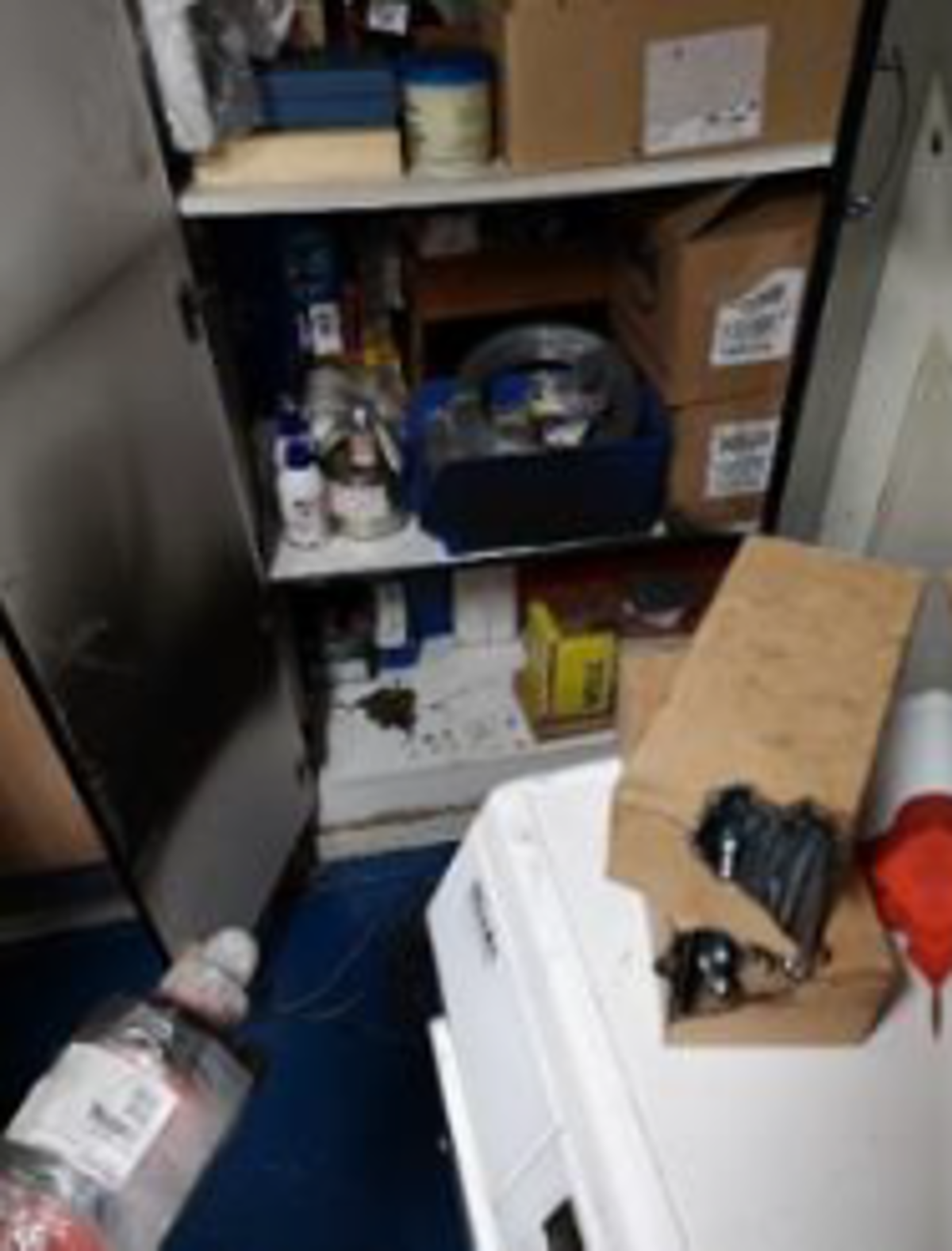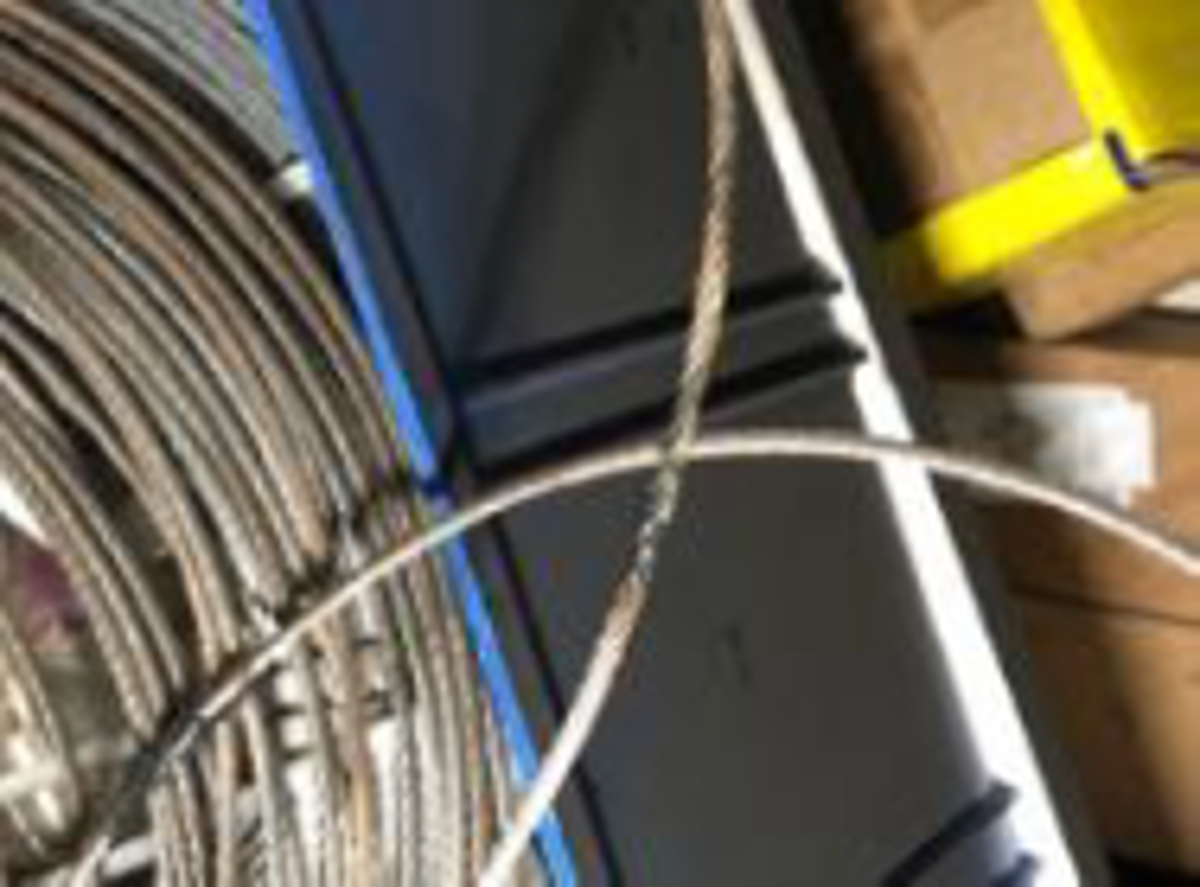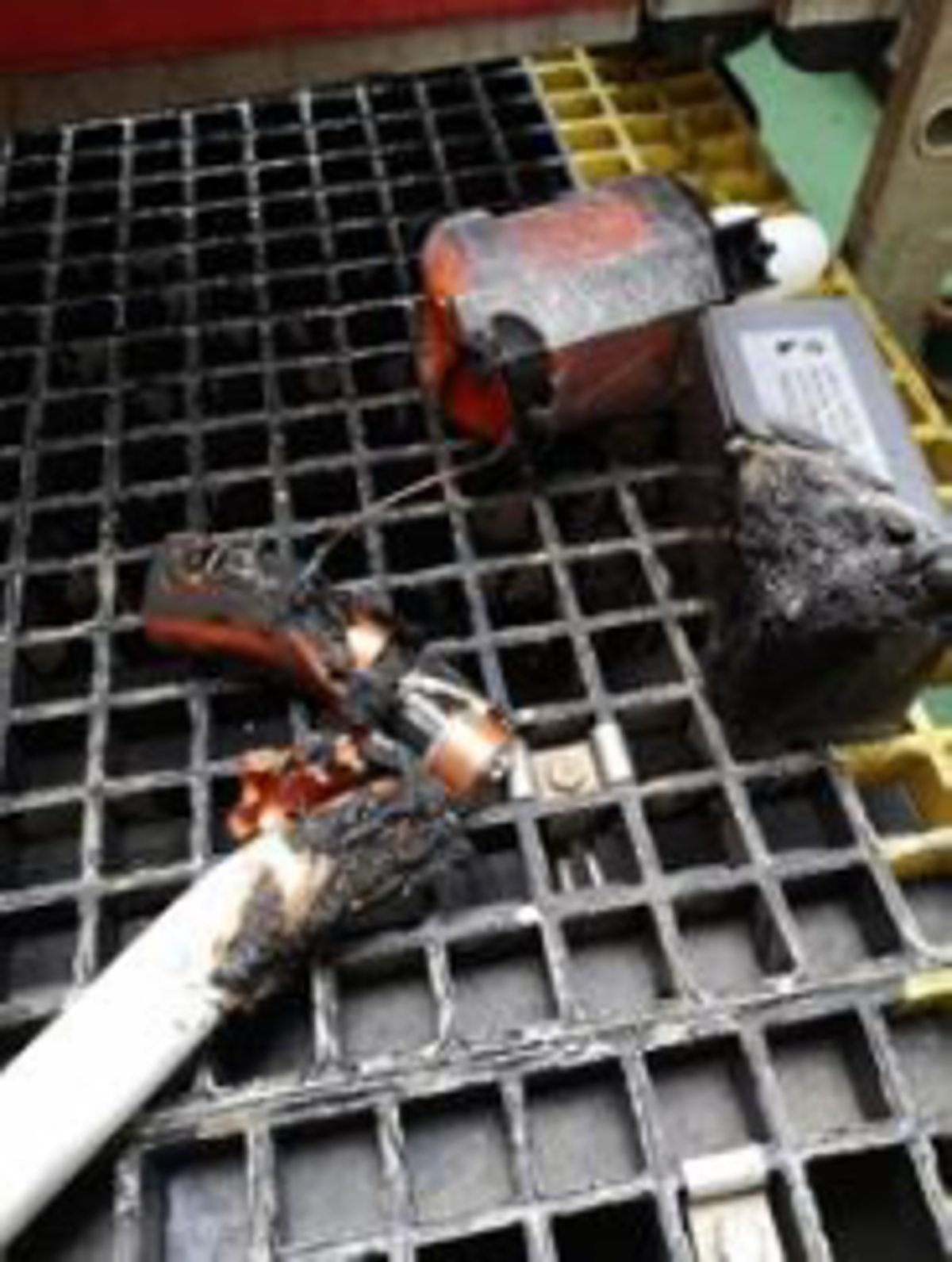Fire in a safety locker
- Safety Flash
- Published on 26 November 2020
- Generated on 15 December 2025
- IMCA SF 32/20
- 2 minute read
Jump to:
What happened?
A small fire occurred in the safety locker of the changing room.
The safety locker was used to store various safety items including among others: An Aldis-lamp spare battery in its carton packaging, a spare stainless steel wire coil for the rescue boat, a Holmes (lifebuoy) light filled with regular batteries and various other safety items packaged in carton boxes.
During rolling of the vessel, the steel wire fell from its position and came in contact with the spare Aldis battery. This created a short circuit and caused high temperature/sparks. As a result the Aldis battery and the steel wire coil were damaged and some of the carton boxes were slightly burned. The smoke triggered the fire alarm and the fire team responded immediately.
Although the damage was limited to the above, the consequences could have been much more serious under slightly different circumstances.
What went wrong?
The materials within the safety locker sparked a fire in combination with each other. The specific combination and cause of the fire is quite unusual but it can still cause a fire.
The storage of the materials, although at first sight was safe and sufficient, did not take fully into account the fire triangle principle.
Actions
- The surroundings of stored materials should be taken into account when considering fire risk.
- Beware of the combination of stored items which may cause development of sparks and/or heat.
- As far as is practical, always remove batteries from any device in storage.
- Check existing stores in light of lessons learned here.
IMCA Safety Flashes summarise key safety matters and incidents, allowing lessons to be more easily learnt for the benefit of the entire offshore industry.
The effectiveness of the IMCA Safety Flash system depends on the industry sharing information and so avoiding repeat incidents. Incidents are classified according to IOGP's Life Saving Rules.
All information is anonymised or sanitised, as appropriate, and warnings for graphic content included where possible.
IMCA makes every effort to ensure both the accuracy and reliability of the information shared, but is not be liable for any guidance and/or recommendation and/or statement herein contained.
The information contained in this document does not fulfil or replace any individual's or Member's legal, regulatory or other duties or obligations in respect of their operations. Individuals and Members remain solely responsible for the safe, lawful and proper conduct of their operations.
Share your safety incidents with IMCA online. Sign-up to receive Safety Flashes straight to your email.


